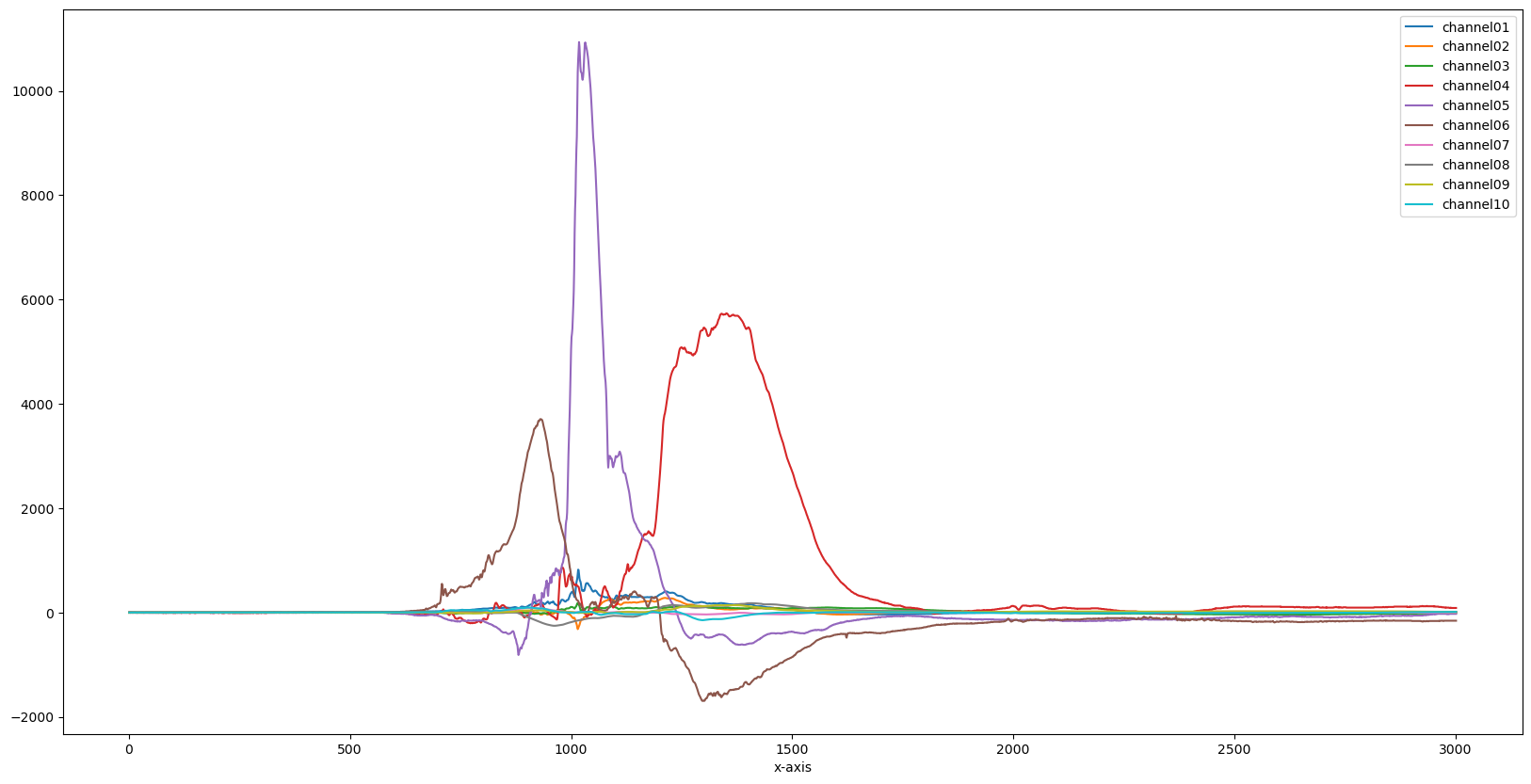Work with Measurement Data#
In this example Notebook, we show you how to use the Peak ODS Adapter for Apache Spark to interact with ODS data using Spark SQL and DataFrames.
The first section is on configuring the Spark framework and the Peak ODS Adapter for Apache Spark. The fun starts with “Work with Measurement Data”.
Happy sparking!
Initialize Spark#
Configure Spark#
Initialize the Spark context and configure it for using the Peak ODS Adapter for Apache Spark as plugin.
In this example we create and connect to a local Spark Master.
from pyspark import SparkConf
from pyspark.sql import SparkSession
conf = SparkConf().set("spark.jars", "/target/spark-ods.jar")
conf.set("spark.sql.repl.eagerEval.enabled",True)
spark = SparkSession.builder.master('local[*]').config(conf = conf).getOrCreate() # or 'spark://spark-master:7077'
sc = spark.sparkContext
Initialize the Peak ODS Adapter for Apache Spark.#
To work with the Peak ODS Adapter for Apache Spark, you need to define the connection information conInfo to the Peak ODS Server together with the location of the bulk data files on disc.
The connection information is then passed to the connectionManager to establish the ODS connection. This odsConnection has to be provided in all Spark ODS operations.
You have to add an override to the ODS MULTI_VOLUME symbol
DISC1to access the bulk data files in the Spark environment.
conInfo = {
"url": "http://nvhdemo:8080/api/",
"user": "sa",
"password": "sa",
"override.symbol.DISC1": "file:///data/NVH/"
}
connectionManager = sc._jvm.com.peaksolution.sparkods.ods.ConnectionManager.instance
odsConnection = connectionManager.createODSConnection(conInfo)
Work with Measurement Data#
In the previous chapter you’ve learned how to work with instance data, now let’s have a look at the actual measurement data.
You use format("ods") to load measurement data.
In our example we’re looking for a measurement with a specific “Id” - you may want to try more fancy queries…
df = spark.read.format("ods").options(**odsConnection).load("where MeaResult.Id = 3")
You can now look at the first 10 rows…
df.limit(10)
| idref | channel01 | channel02 | channel03 | channel04 | channel05 | channel06 | channel07 | channel08 | channel09 | channel10 | x-axis |
|---|---|---|---|---|---|---|---|---|---|---|---|
| NVHDEMO_SubMatrix_3 | 4.38541E-6 | 2.02778 | -4.44111 | -4.51025 | 1.86265E-6 | -1.74623E-7 | -0.192593 | 0.770431 | -0.579521 | 0.371926 | 1 |
| NVHDEMO_SubMatrix_3 | 4.38541E-6 | 2.02778 | -2.03551 | -4.51025 | 1.86265E-6 | -1.74623E-7 | -0.192593 | 0.770431 | -0.579521 | 0.371926 | 2 |
| NVHDEMO_SubMatrix_3 | 4.38541E-6 | 2.02778 | -4.44111 | -4.51025 | -6.52153 | -1.74623E-7 | -0.192593 | 0.770431 | -0.579521 | 0.371926 | 3 |
| NVHDEMO_SubMatrix_3 | 2.40175 | 2.02778 | -4.44111 | 2.00455 | -6.52153 | -1.74623E-7 | -0.192593 | 0.770431 | -0.579521 | 0.371926 | 4 |
| NVHDEMO_SubMatrix_3 | 4.38541E-6 | -0.368683 | -4.44111 | 2.00455 | -6.52153 | -1.74623E-7 | -0.192593 | 0.770431 | -0.579521 | 0.371926 | 5 |
| NVHDEMO_SubMatrix_3 | 4.38541E-6 | -0.368683 | -2.03551 | -4.51025 | 1.86265E-6 | -1.74623E-7 | -0.192593 | 0.770431 | -0.579521 | 0.371926 | 6 |
| NVHDEMO_SubMatrix_3 | 2.40175 | 2.02778 | -4.44111 | -4.51025 | -6.52153 | -1.74623E-7 | -0.192593 | 0.770431 | -0.579521 | 0.371926 | 7 |
| NVHDEMO_SubMatrix_3 | 4.38541E-6 | -0.368683 | -2.03551 | -4.51025 | 1.86265E-6 | -1.74623E-7 | -0.192593 | 0.770431 | -0.579521 | 0.371926 | 8 |
| NVHDEMO_SubMatrix_3 | 4.38541E-6 | 2.02778 | -4.44111 | -4.51025 | -6.52153 | -5.43436 | -0.192593 | 0.577823 | -0.579521 | 0.371926 | 9 |
| NVHDEMO_SubMatrix_3 | 4.38541E-6 | 2.02778 | -2.03551 | -4.51025 | 1.86265E-6 | -1.74623E-7 | -0.192593 | 0.770431 | -0.579521 | 0.371926 | 10 |
… or plot them in a line chart …
%matplotlib inline
import pandas as pd
import pyspark
import matplotlib.pyplot as plt
plt.rcParams["figure.figsize"] = (20,10)
pdf = df.toPandas().groupby(["idref", "x-axis"], group_keys=True).sum()
pdf.loc['NVHDEMO_SubMatrix_3'].plot()
plt.show()

Now that your measurement data is in a pandas.DataFrame, you can also use all options using pandas.
Have fun.
Close the SparkContext#
It is a good practice to close the SparkContext when you’re done with it.
This will ensure that all Spark-related operations are properly terminated before your program exits.
sc.stop()
License#
Copyright © 2025 Peak Solution GmbH
The training material in this repository is licensed under a Creative Commons BY-NC-SA 4.0 license. See LICENSE file for more information.
Notebook: 📓 Back to Apache Spark Overview

